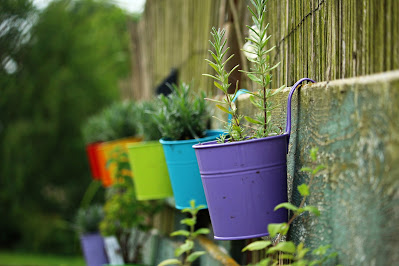Lavender is a fragrant herb that is widely loved by the people. Flowers can be extracted from essential oils, or made into dried flower sachets. Many people like to buy some for home farming, but the specific breeding methods are not very clear.
1. Soil
The seeds of lavender are relatively small and the germination rate is low. Therefore, the soil used for general sowing needs to be loose, air-permeable, high water-holding capacity, and sufficient disinfection. It is suitable for slightly alkaline or neutral sandy soil. It can be mixed with 1/3 pearl stone, 1/3 vermiculite, and 1/3 peat moss.
The seeds of lavender are relatively small and the germination rate is low. Therefore, the soil used for general sowing needs to be loose, air-permeable, high water-holding capacity, and sufficient disinfection. It is suitable for slightly alkaline or neutral sandy soil. It can be mixed with 1/3 pearl stone, 1/3 vermiculite, and 1/3 peat moss.
The planting of family sowing lavender can be replaced by a relatively short flower pot or other container. For example, in a box of yogurt, use an awl to pierce a few small holes in the bottom of the box. Disposable plastic cups are also available, but because of the transparency, it is best to use black paper paste or cover the outside with a paper cup (if the roots of plants are exposed to the sun, it will affect the growth, and the soil is easy to grow green moss).
Lavender does not like to have water in the roots. After watering it once, it should be watered when the soil is dry. Water in the morning, avoid sunlight, and do not splash the water on the leaves and flowers, otherwise it will rot and breed pests.
4. Light
Lavender needs plenty of sunlight and a humid environment. In summer, at least 50% of the sun should be blocked and ventilation should be increased to lower the ambient temperature. In winter, lavender can grow well on flat ground and should be cultivated in full sun.
5. Temperature
Lavender is semi-heat resistant. It loves warm in winter and cool in summer. The suitable temperature for growth is 15~25℃. It can grow at 5~30℃. The top stems and leaves are withered for a long time higher than 38~40℃. It starts to sleep below 0°C.
For lavender fertilization, bone meal can be placed in the pot soil as a base fertilizer (used once every three months), and seedlings can be applied with a balanced nitrogen, phosphorus and potassium compound fertilizer (component ratio: the content of nitrogen, phosphorus, and potassium is 20:20:20) Apply fertilizer with higher phosphate fertilizer after planting.7. Shaping
Cut the lavender at the first node under the flower after flowering, and trim the plant into a hemisphere by the way. Cut off the dry branches at any time, in order to control the plant height or get a better plant shape, in the late summer Re-cut appropriately in early autumn to promote new shoots.
1. Seed propagation
Lavender seeds are small and suitable for seedling transplanting. The sowing period is generally spring. In warm areas, it can be done from March to June or September to November each year. In cold areas, it is recommended to plant from April to June, and it can also be planted in the greenhouse in winter. The germination days are about 14-21 days. Suitable temperature for germination: 18~24℃.
2. Cutting propagation
Cuttings are generally carried out in spring and autumn. Twig cuttings are also available in summer. The cutting medium can be 2/3 coarse sand mixed with 1/3 peat moss. Choose healthy and vigorous planting plants, select the top buds of the annual semi-lignified branches with short, sturdy pitch and no heading, and cut the cuttings at the top 8-10cm.
Lavender cannot tolerate heat and humidity and will die if it is exposed to waterlogging for a long time. When planting outdoors, be careful not to let rainwater directly on the plants. After May, it is necessary to move to a place where there is no direct sunlight, increase ventilation to lower the ambient temperature, and keep it cool to survive the hot summer.
The method of lavender pot cultivation is relatively easy. First, you must choose a good container, then mix the soil, and finally cultivate. When breeding, always strengthen the management of water and fertilizer. Lavender is not suitable for direct sunlight in summer, so it should be shaded.












0 Comments
Post a Comment